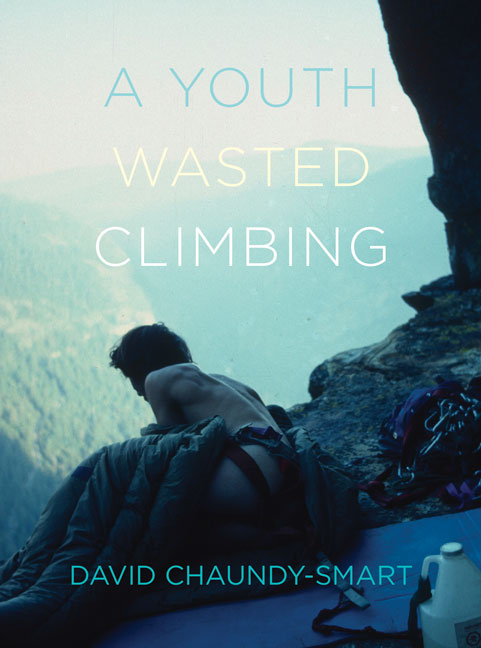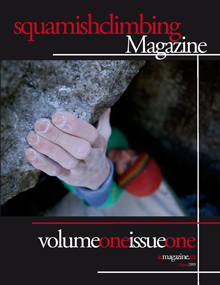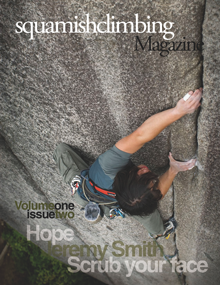David Chaundy-Smart started climbing in Toronto in 1975. He now owns several publications, including Gripped Magazine, has authored five guidebooks for the Ontario climbing scene and recently published a book of memoirs titled ‘A Youth Wasted Climbing’.
David starts his West Coast book tour next week in Victoria on October 10th, at Patagonia Victoria, followed by an event on October 12th in Vancouver at the Book Warehouse on Main Street. We thought it would be a great idea to chat with David and here his ideas on history, climbing in Canada, and where it all is going. Here is what he had to say.
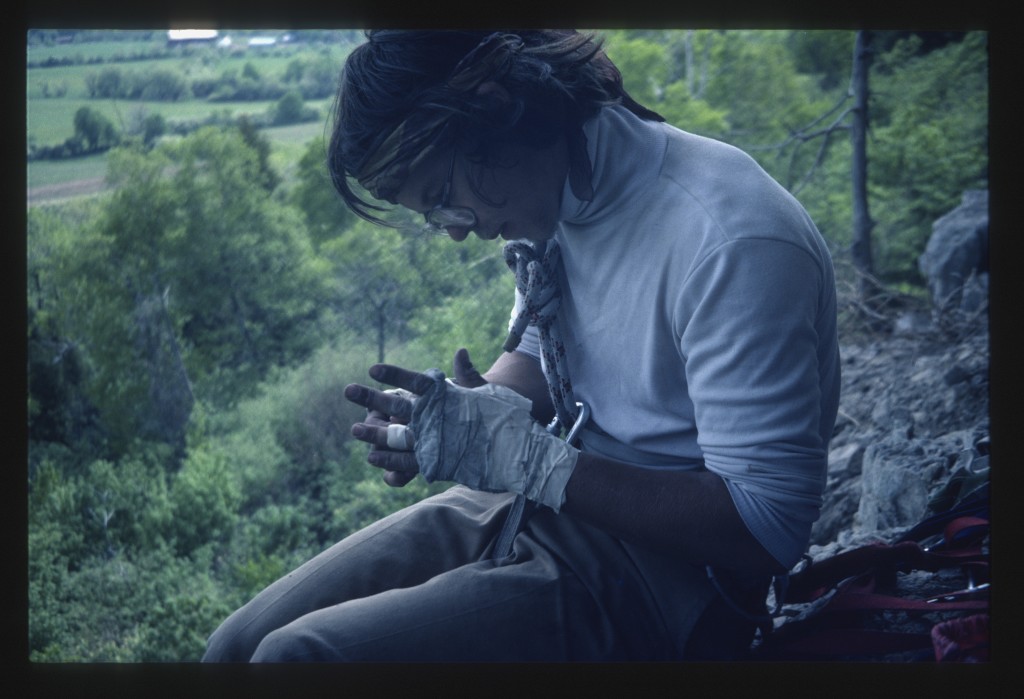
A young David Chaundy-Smart. Photo courtesy of David Chaundy-Smart ©
Hi David, thanks for taking the time to talk to us.
So, you are heading out west on a BC book tour. Can you tell us a bit about your trip?
I’ll be reading at the Patagonia Store in Victoria on Saturday Oct 10 and then at Book Warehouse in Vancouver on Monday Oct 12. Both readings are at 7 pm.
For those who may not know your background, can you tell us a bit about your history?
I started climbing in 1975 in Toronto. I’ve lived in Toronto and Calgary and travelled to many spots to climb in North America and Europe. I have authored five climbing guidebooks, helped found five commercial magazines and now I have written A Youth Wasted Climbing, a memoir of suburban rock climbing in the 70s and 80s. My first novel will be published by Imaginary Mountain Surveyors in 2016.
So, what made you want to write the memoirs of your youth?
Many people who started climbing around the same time as I did had similar experiences. I think there’s a generational story about what it used to be like to get into the game of rock climbing, at least if you were on the fringes of it, as most people always are and everyone in Canada was back then. And I like telling stories.
In the process of writing did you find yourself longing for more adventure or revelling in the past?
I’m actually not very nostalgic, and perhaps A Youth Wasted Climbing differs from some books in that it doesn’t look at the past through gauzy eyes. At 53 I still like climbing but don’t think I will outdo my younger self, such as I was.
Spending your whole life climbing, there has to be a few defining moments. At what age did the world of climbing grab you and was there a moment that started it all?
There were several points in which instead of choosing to go one way I went the way that led to more climbing. Climbing forty years ago was a small hidden door most people found by accident. I suppose just being introduced to it at all at a summer camp was the first inkling it might be for me. Meeting other kids like Sig Isaac who were the same age and from the same background as me at Rattlesnake Point made me feel like I was part of something bigger than my imagination and added a social and competitive impetus.
Was there any event or sequence of events that changed your perspective as a climber after you were well into it?
One would be the death of local hardman George Manson and his party on the Cassin Ridge which I learned of returning from my first trip to Yosemite Valley in 1979. I looked up to him as an absolutely competent indestructible expert. Learning how vulnerable we all were was a big part of growing up.
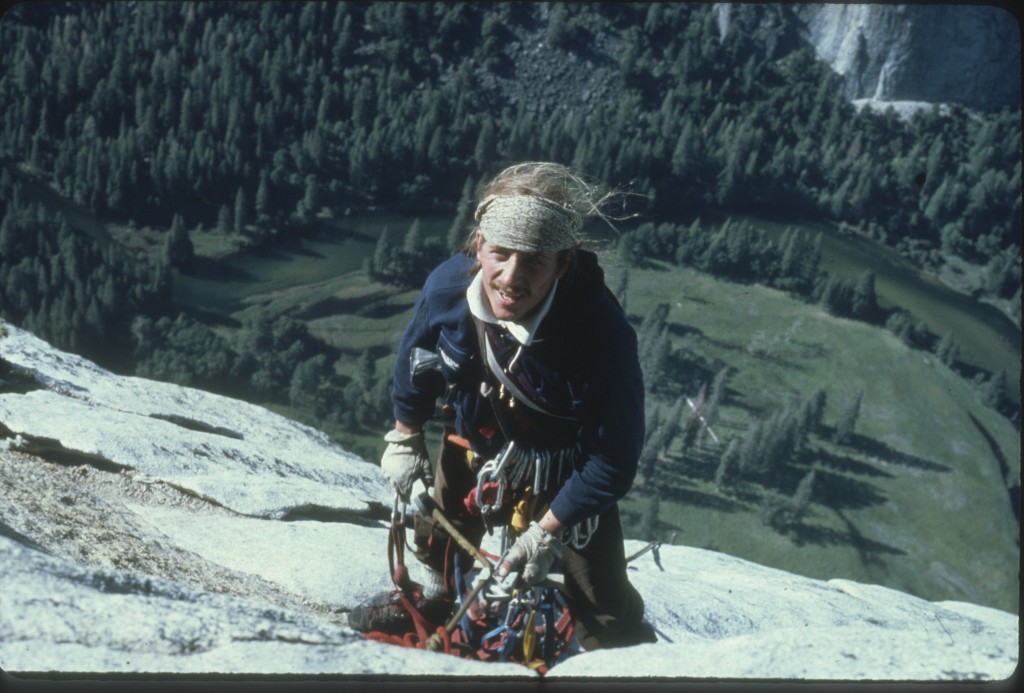
George Manson on El Capitan. Photo courtesy of D.Chaundy-Smart ©
How did the Eastern Canada climbing scene influence your ideas and your approach to climbing?
It wasn’t much of a scene back then, and the rock climbing scenes in Squamish and the Rockies were nothing like they are today either, as you can tell by looking at the old guidebooks for Yamnuska or Squamish. But there was a core of people at Rattlesnake: George Manson, Rob Rohn and Mike Tschipper in particular, who were as good as most climbers anywhere. There were three accepted world-class centres of the American rock climbing world back then, Colorado, Yosemite and the Gunks and we were able to spend a lot of time in the Gunks because it was eight hours away.
As a youth, did you long for the exploration of the west and its influence on climbing or did you prefer to focus on your own backyard?
The biggest test of climber at the time was to do a multi-day big wall and they only really existed out west, so we made many trips there. Later on, when I figured out I preferred short climbs I focussed on new routing on limestone cliffs in Ontario, but still made trips to the west, and to European destinations like Verdon and the UK and so on.
Looking back, the journey has obviously been fulfilling. How do you see yourself now in the culture of climbing as it evolves and changes?
My main present and future contribution is in the cultural and literary side of climbing. I still dabble in retro-fitting routes though. I think the biggest challenge is the number of climbers we have now. I think it’s a great opportunity for climbing.

David Chaundy-Smart on Foops, 5.11, in the Gunks. Photo courtesy of D, Chaundy-Smart ©
Being the owner of a climbing publication, you must see value in the documentation of history. Why do you think the history of climbing in Canada is important for future generations?
Partly because it has been ignored and people who are trying to document it have a backlog of research and work to do. The bigger it gets, the more of the story is lost. There are tremendous opportunities for this kind of writing about Canadian climbing. There are so many areas and events that deserve their own histories.
Have you seen a shift in climbing culture over your tenure as a climber?
Of course, in rock climbing style, the dissemination of information through the internet, climbing gyms, serious training and so on. At the root of it all is a desire to get out and climb though. The other stuff is just opportunities that history changes and presents. The inevitability of a person coming along who looks at a rock and wants to climb it and then falls in love with climbing it will never change.
Do you like the way things are going or do you think things are leaving something behind?
I have four daughters. They look at so many things differently than me, and I like that. I also want them to consider the past. When I was a young climber I was always unhappy with being told I was getting it wrong. At one reading someone came out of the crowd afterwards and said he had known me back in Ontario when I was 15 and I was one of young punks who wrecked it all. I hope I never become like him. I was only ever someone who wanted to climb, so I’m in favour of whatever makes as many people as want to climb able to do so.
What did you do when the man confronted you?
I asked if he’d like to buy a book.
I have to ask about the early days at Gripped Magazine. Why did you start the magazine and were there struggles in the beginning?
Sam Cohen, the publisher, and myself thought we were a winning team to take on the challenge of providing a commercial magazine like Climbing focussing on all of the stuff happening in Canada. There were struggles, but since then the company has grown to publish several other magazines.
Can you tell us a little about how the magazine has evolved over time?
We’ve developed with our contributors and the changing scene. The internet and social media are bigger components now but the core of our publication is still the paper magazine.
Did you ever imagine years ago that you would end up where you are now?
I have a hard time imagining where I’ll end up next week, let alone in years. I always imagined climbing would always be there in some way and it has been.
Writing a book of this magnitude must be time consuming. Was it all ‘heading out to the cabin’ like the movies or was the process more difficult than that?
Writing anything good has to be an act of focus and discipline and learning, so I always set aside time to write without distraction, usually in the early morning. I work in editorial so some of the aspects of the craft were familiar and I learned a lot of new skills. The bar is very high for Canadian climbing writers, what with people like Bernadette McDonald, Jerry Auld and Chic Scott around, so I wanted to produce something good. I knew the stories but I talked to some other people also did who filled in details and corrected what I misremembered. My brother Reg, who is also a climber and who allowed his story to be told with mine in my book, was a great help in this regard.
If you had to give one piece of advice to that young climber dreaming of adventure, what would it be?
I will give two. Place lots of protection. Read lots of books.
Thanks again for your time and best of luck on your trip out West. Hopefully you are greeted with sunshine and not squalls of rain.
To purchase ‘A Youth Wasted Climbing’, please visit Rocky Mountain Books.
David will be doing a reading of his book at the Patagonia Store in Victoria on October 10th, 2015 and at the Book Warehouse on Main Street in Vancouver, BC on October 12th,2015
